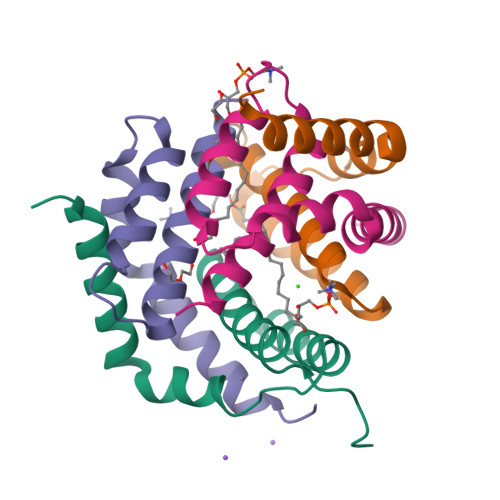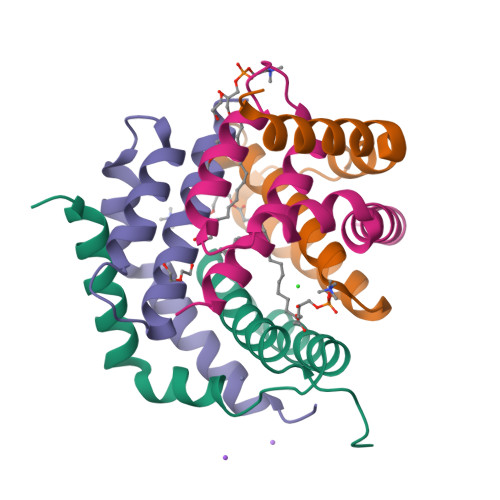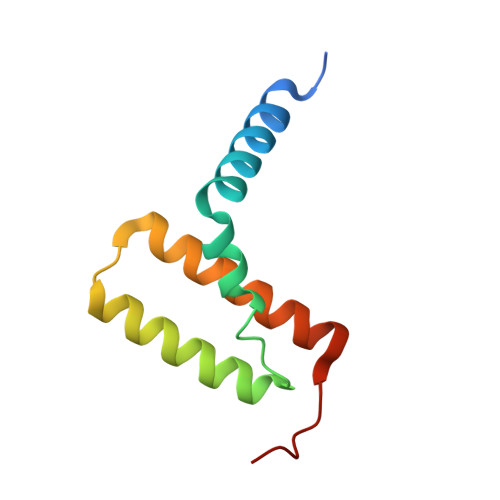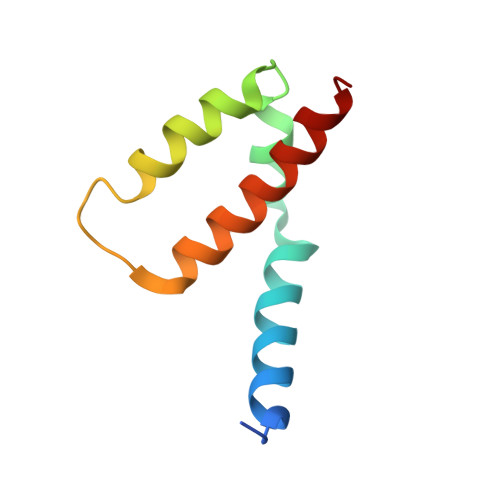Sequence differences between BAX and BAK core domains manifest as differences in their interactions with lipids.
Miller, M.S., Cowan, A.D., Brouwer, J.M., Smyth, S.T., Peng, L., Wardak, A.Z., Uren, R.T., Luo, C., Roy, M.J., Shah, S., Tan, Z., Reid, G.E., Colman, P.M., Czabotar, P.E.(2024) FEBS J 291: 2335-2353
- PubMed: 38088212
- DOI: https://doi.org/10.1111/febs.17031
- Primary Citation of Related Structures:
8G1T, 8SPE, 8SPF, 8SPZ, 8SRX, 8SRY, 8SVK - PubMed Abstract:
The B-cell lymphoma 2 (BCL2) family members, BCL2-associated protein X (BAX) and BCL2 homologous antagonist killer (BAK), are required for programmed cell death via the mitochondrial pathway. When cells are stressed, damaged or redundant, the balance of power between the BCL2 family of proteins shifts towards BAX and BAK, allowing their transition from an inactive, monomeric state to a membrane-active oligomeric form that releases cytochrome c from the mitochondrial intermembrane space. That oligomeric state has an essential intermediate, a symmetric homodimer of BAX or BAK. Here we describe crystal structures of dimers of the core domain of BAX, comprising its helices α2-α5. These structures provide an atomic resolution description of the interactions that drive BAX homo-dimerisation and insights into potential interaction between core domain dimers and membrane lipids. The previously identified BAK lipid-interacting sites are not conserved with BAX and are likely to determine the differences between them in their interactions with lipids. We also describe structures of heterodimers of BAK/BAX core domains, yielding further insight into the differences in lipid binding between BAX and BAK.
Organizational Affiliation:
Walter and Eliza Hall Institute of Medical Research, Parkville, Vic., Australia.

























